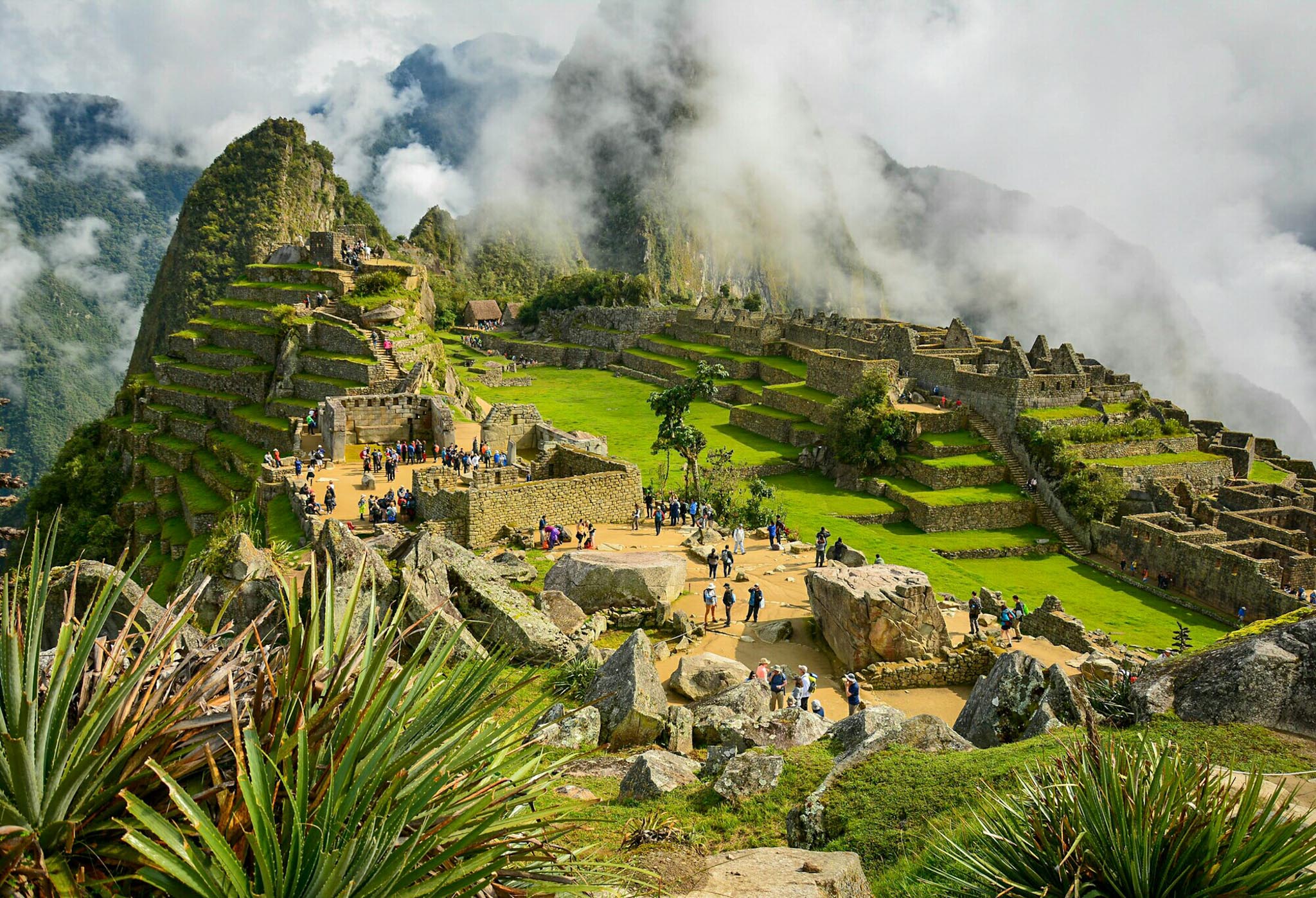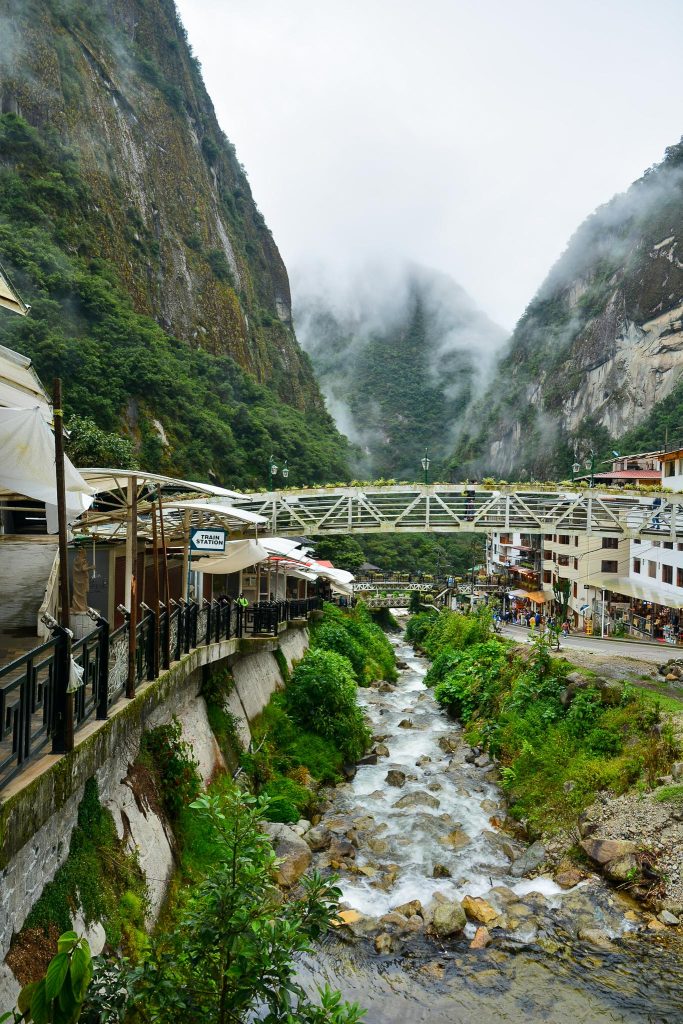
Cusco and the Sacred Valley of the Incas – A Journey to the Heart of the Empire
Cusco, located at an altitude of 3,400 meters above sea level, surrounded by the majestic Andes, is the gateway to the Sacred Valley of the Incas and Machu Picchu - the greatest cultural heritage of South America. It is a place that seems to exist outside of time. Once the capital of the mighty Inca Empire - Tahuantinsuyo - today one of the most magical and fascinating cities in South America. Its history, culture and spiritual significance attract travelers from all over the world who seek not only beautiful views, but also a deeper connection with nature and history.
A Brief History
Cusco, known in Quechua as “Qosqo,” meaning “navel of the world,” was founded around the 12th century. According to legend, the city was founded by Manco Capac, the first Inca ruler, who received divine guidance from the sun god Inti. Over the centuries, Cusco grew in power, becoming the political, cultural, and spiritual center of the Incas.In the 16th century, with the arrival of the Spanish conquistadors, Cusco underwent drastic changes. Inca temples and palaces were destroyed or converted into churches, but traces of the empire's glory remained visible today in the city's solid stone walls and architecture.
Why Visit Cusco?
Gateway to Machu Picchu
Cusco is the starting point for expeditions to the famous Machu Picchu – one of the seven new wonders of the world. It is from the city that scenic trekking routes and trains leading to this ancient citadel start.
Unique Architecture
The city is a harmonious blend of Inca foundations and colonial structures. Walking through the streets of Cusco, you can admire precisely crafted stone walls, such as the famous "Wall of Twelve Corners", and baroque churches, such as the Cathedral of Cusco and the Church of Santo Domingo.
Spirituality and Energy
Cusco has a unique atmosphere, literally and metaphorically. The altitude and crystal clear air give the place a mystical aura that attracts those seeking spiritual renewal. In nearby temples like Sacsayhuamán and Koricancha, you can feel the energy of ancient Inca rituals.
The Wealth of Culture
Cusco is also the cultural capital of the region. Colorful markets like San Pedro offer local products, from alpaca textiles to traditional Peruvian dishes like ceviche and caldo de gallina.
Landscapes and Nature
The city is surrounded by breathtaking views of mountain peaks, valleys and agricultural terraces. It is an ideal place for trekking and photography enthusiasts.
The Magical Climate of Cusco
Cusco is not only distinguished by its history and architecture, but also by its atmosphere, which is hard to find anywhere else. It is a place where history meets modernity – the streets are bustling with life, and at the same time they exude peace and harmony. Magical Cusco is also a place where you can feel the closeness of nature and spirituality – both in the scent of palo santo wafting through the local markets, and in the sound of the wind on the nearby hills.
For many travelers, Cusco is not just a stopover on the way to Machu Picchu, but a destination in itself – a place that speaks to the heart and soul. If you are looking for authenticity, inspiration and a touch of magic, Cusco is a place you can't miss.


Machu Picchu – The Mystical City of the Incas
Machu Picchu, known as the “Lost City of the Incas,” is one of the most iconic sites in the world and an absolute must-see for any traveler visiting Peru. This majestic archaeological site, located at an altitude of 2,430 meters above sea level, is surrounded by the lush greenery of the Andes, often mysterious fog, which gives it an almost mystical character. Every stone, terrace and temple in Machu Picchu tells the story of the power and genius of the Inca civilization.
A Brief History of Machu Picchu
Machu Picchu was built in the 15th century by King Pachacutec, one of the greatest rulers of the Inca Empire. The city was probably a ceremonial site, a royal residence, or a strategic agricultural center. After the Spanish conquest, the Inca Empire was abandoned and forgotten for centuries until its ruins were rediscovered in 1911 by American archaeologist Hiram Bingham. To this day, Machu Picchu remains a symbol of the engineering excellence and profound spirituality of the Incas. In 1983, it was added to the UNESCO World Heritage List, and in 2007 it was declared one of the New Seven Wonders of the World.
Why Visit Machu Picchu?
Amazing Architecture
Machu Picchu is a masterpiece of Inca engineering. The complex consists of hundreds of terraces, temples, palaces and residential houses, built of precisely cut stones. The most famous structures are the Temple of the Sun, the Intihuatana (stone sundial) and the Temple of the Three Windows. Each of these monuments reflects the Incas' deep knowledge of astronomy, agriculture and spirituality. To this day, the entire technical world puzzles over the technology that the builders of the time used to cut the stones so precisely.
Spectacular Views
Located on a ridge in the Andes, it ranges from 2,090 to 2,500 meters above sea level. It is surrounded on three sides by the Urubamba River, and on the fourth side by Huayana Picchu. Its difficult location meant that the Spanish colonizers never conquered it. Machu Picchu offers breathtaking views. The mountains of Huayna Picchu and Machu Picchu rise like sentinels over the city, and the surrounding tropical vegetation adds a mystical charm. Dawn in Machu Picchu, when the morning mist clears and the first rays of the sun illuminate the ruins, is a moment that will remain in the memory forever.
Mystical Aura
Machu Picchu, known as the Earth's chakra, is a place where you can feel a deep connection to the past. Its location encourages an atmosphere of spiritual reflection. Many visitors to Machu Picchu describe the experience as magical and transformative.


























Sacred Valley – The Mystical Valley of the Incas
The Sacred Valley, or the Sacred Valley of the Incas, is a place that captivates with its natural beauty, rich history and spiritual aura. Stretching along the Urubamba River, the valley was once one of the most important agricultural areas of the Inca Empire. Thanks to its unique microclimate and fertile lands, it was here that corn, potatoes and sacred plants were grown, which were crucial for the survival of the Inca civilization. Today, the Sacred Valley is a place full of magic, attracting travelers from all over the world who want to discover its treasures - from picturesque villages to monumental monuments.
Sacred Valley Tour Points
Pisac – Terraces and Market
A tour of the Sacred Valley often begins in Pisac, where you can admire some of the best-preserved Inca agricultural terraces. These terraces, situated on the mountainsides, demonstrate the engineering genius of the Incas. After exploring the archaeological complex, it is worth visiting the colorful market in the center of the village. This is a great opportunity to buy handicrafts, alpaca textiles, and local delicacies.
Ollantaytambo – The Last Fortress of the Incas
Next stop is Ollantaytambo, a charming town that has preserved its original Inca street layout. The village is dominated by an impressive fortress, which serves both defensive and ceremonial purposes. A walk up a steep stone staircase leads to the Temple of the Sun, from where there are breathtaking views of the valley and mountains. This is where some of the last battles between the Incas and the Spanish conquistadors took place.
Moray - Farm Circles
One of the most intriguing sites in the Sacred Valley is Moray, an ancient Inca agricultural complex. The distinctive concentric circles resemble a natural amphitheater, but they served as an agricultural laboratory for the Incas. With different levels of terraces, each with a different microclimate, the Incas experimented with crop cultivation here. This site epitomizes their advanced knowledge of ecology and agriculture.
Maras – Salt Terraces
The incredibly photogenic and fascinating salt terraces of Maras are another must-see. These hundreds of small pools, filled with salt water flowing from a mountain spring, have been used to produce salt for centuries. Walking along the terraces, you can admire how local farmers still use traditional methods of extracting salt. It is worth tasting the pink salt, which has become a trademark of this place.
Chinchero – Weaving and Culture
Chinchero, known as the “Rainbow City,” is a popular destination to end your journey. This destination offers not only breathtaking mountain views but also a deep dive into the local culture. Chinchero is known for its traditional weaving, where you can watch local women dye wool with natural dyes and create beautiful textiles. On the hillside of the village is a colonial church, built on the foundations of an Inca temple, symbolizing the union of two worlds.
Why is Sacred Valley Magical?
The Sacred Valley is not only picturesque landscapes and impressive monuments - it is a place where you can feel the presence of the past and the spirit of nature. The Sacred Valley was not only a place of work for the Incas, but also a sacred space, full of energy flowing from the mountains, rivers and land. Walking through the valley, you can feel how history connects with the present, and the spirituality of this place penetrates the heart of everyone who comes here. For travelers, the Sacred Valley is not just a stopover on the way to Machu Picchu, but also a destination full of discoveries, emotions and inspiration. Whether you are interested in history, culture or just want to feel the magic of this place - the Sacred Valley will not disappoint you.

